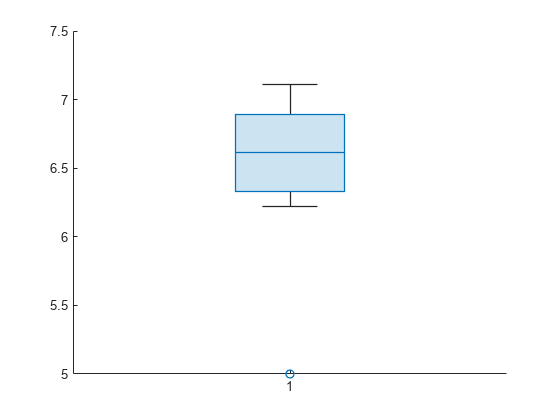cvpartition
Partition data for cross-validation
Description
cvpartition defines a random partition on a data set. Use this partition
to define training and test sets for validating a statistical model using cross-validation.
Use training to extract the training indices and test to extract the test indices for cross-validation. Use repartition to define a new random partition of the same type as a given
cvpartition object.
If you specify a stratification or grouping variable when you create a
cvpartition object, you can use summary to display
more information about the data partition.
Creation
Syntax
Description
c = cvpartition(n,KFold=k)cvpartition object c that defines a
random nonstratified partition for k-fold cross-validation on
n observations. The partition randomly divides the observations
into k disjoint subsamples, or folds, each of which has
approximately the same number of observations.
c = cvpartition(n,KFold=k,GroupingVariables=groupingVariables)c that defines a random partition for k-fold
cross-validation. The function ensures that observations with the same combination of
group labels, as specified by groupingVariables, are in the same
fold. (since R2025a)
When you specify groupingVariables,
cvpartition discards rows of observations corresponding to
missing values in groupingVariables.
c = cvpartition(stratvar,KFold=k)k-fold cross-validation.
Each subsample, or fold, has approximately the same number of observations and contains
approximately the same class proportions as in stratvar.
When you specify stratvar as the first input argument,
cvpartition discards rows of observations corresponding to
missing values in stratvar.
c = cvpartition(stratvar,KFold=k,Stratify=stratifyOption)c that defines a random partition for
k-fold cross-validation. If you specify
Stratify=false, then cvpartition ignores the
class information in stratvar and creates a nonstratified random
partition. Otherwise, the function implements stratification by default.
c = cvpartition(stratvar,Holdout=p,Stratify=stratifyOption)c that defines a random partition into a training
set and a test, or holdout, set. If you specify Stratify=false, then
cvpartition creates a nonstratified random partition. Otherwise,
the function implements stratification by default.
c = cvpartition(n,"Leaveout")n
observations. Leave-one-out is a special case of KFold in which the
number of folds equals the number of observations.
c = cvpartition(
creates an object n,"Resubstitution")c that does not partition the data. Both the
training set and the test set contain all of the original n
observations.
Input Arguments
Properties
Object Functions
repartition | Repartition data for cross-validation |
summary | Summarize cross-validation partition with stratification or grouping variable |
test | Test indices for cross-validation |
training | Training indices for cross-validation |
Examples
Tips
If you specify
stratvaras the first input argument tocvpartition, then the function discards rows of observations corresponding to missing values instratvar. Similarly, if you specify one or more grouping variables by usinggroupingVariables, then the function discards rows of observations corresponding to missing values ingroupingVariables.If you specify
stratvaras the first input argument tocvpartition, then the function implements stratification by default. You can specifyStratify=falseto create a nonstratified random partition.You can specify
Stratify=trueonly when the first input argument tocvpartitionisstratvar.

